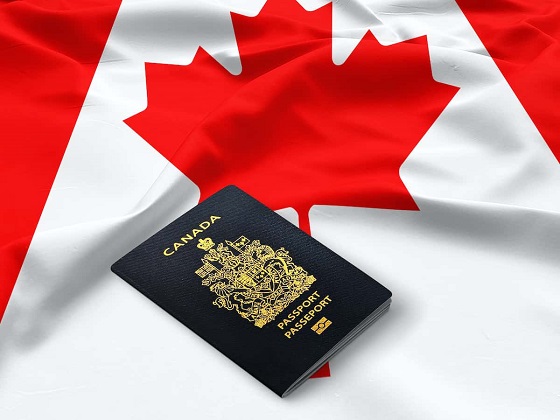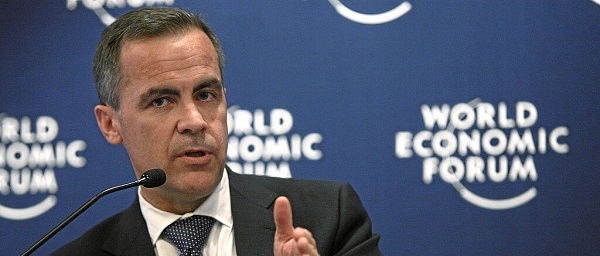Alberta
Premier Smith to Ottawa: Alberta can’t afford thousands of asylum seekers right now

From Free Alberta Strategy
For decades, Canada’s immigration policies were uncontroversial – parties across the spectrum maintained generally sensible policies.
But the current government in Ottawa has ditched this consensus, and the public mood is turning fast.
A large influx of newcomers has put a significant strain on public services and the housing market across the country.
Alberta, in particular, is feeling the strain, as our province receives both a disproportionately large share of the immigrants arriving in Canada, as well as by far the largest number of people moving between provinces.
Earlier this year, the Alberta government reported that in the year from April 2023 to April 2024, Alberta’s population had grown a record 4.11%, representing 204,677 people.
This is by far the highest annual growth rate in the country, outpacing second-place Ontario by nearly a full percentage point.
Importantly, international migration is responsible for about 68% of the increase, interprovincial migration is responsible for about 25%, and just 8% is caused by natural increase.
Another area of immigration that has significantly increased in Alberta is asylum seekers, which have more than doubled from 5,076 per year to 11,292 per year.
Of course, this represents just a small portion of the overall immigration to Alberta, and Alberta actually accepts a much smaller share of asylum seekers (about 5% of the total) compared with our population (about 12% of Canada).
But, Ottawa is now pushing to change this – they want provinces like Alberta to accept more of their “fair share” of asylum seekers – despite the fact that Alberta already receives more than its “fair share” of other types of immigrants.
Federal Immigration Minister Marc Millers says the federal government anticipates full cooperation from all provinces and territories as it strives for a fair and sustainable approach to managing the influx.
He says the federal government has “levers that we need to push and pull” when it comes to enticing provinces to agree to their terms:
“The reality is that Quebec and Ontario are facing disproportionate pressures, compared to any other province in the country – as they have been welcoming the majority of asylum seekers,” says the Minister.
“We will have proper incentives for those willing to welcome asylum seekers, and will take a holistic view with regards to other immigration programs based on participation – as this is work we cannot do alone, nor unilaterally. All options remain on the table.”
In other words, the federal government is once again planning on spending more of our tax dollars to effectively bribe the provinces’ to go along with their policies.
This idea isn’t new – Quebec has already urged the Trudeau government to disperse asylum-seekers more evenly across the provinces.
Premier Smith, however, is saying no:
“Section 95 of the Constitution is clear – immigration is an area of shared authority between the federal government and the provinces.”
“We are informing the Government of Canada that until further notice, Alberta is not open to having these additional asylum seekers settled in our province,” she added.
“We simply cannot afford it.”
Maybe, when the full details of the federal government’s plan are made public, the numbers will stack up.
But, based on past precedent, it seems unlikely.
More likely, this is just another agreement with the federal government that Alberta can’t afford to make.
Time and time again, we’ve seen the federal government approach the provincial government with a deal that – in Ottawa’s view – is good for the province.
We know, as we’ve seen with the nationalized childcare fiasco, that these deals very rarely work out for Alberta.
The Free Alberta Strategy continues to be Alberta’s shield against federal overreach, ensuring that Albertans remain in control of our future.
This issue is just the latest battle in which our unwavering defence of our provinces’ best interests can make a real difference.
If you believe in defending Alberta from Ottawa, join us!
Your contribution will help ensure that the Free Alberta Strategy has the resources and voice it needs to push back.
Donate today to stand up for Alberta’s sovereignty and sustainability!
Alberta
Alberta government records $8.3 billion surplus—but the good times may soon end

From the Fraser Institute
By Tegan Hill
According to last week’s fiscal update, the Smith government recorded a $8.3 billion surplus in 2024/25—$8 billion more than what the government projected in its original 2024 budget. But the good times won’t last forever.
Due largely to population growth, personal income tax revenue exceeded budget projections by $500 million. Business tax revenue exceeded budget expectations by $1.1 billion. And critically, thanks to relatively strong oil prices, resource revenue (e.g. oil and gas royalties) saw a $4.7 billion jump.
The large budget surplus is good news, particularly as it will be used to pay down government debt (which taxpayers must ultimately finance) and to invest for the future. But again, the good times could soon be over.
Recall, the Alberta government incurred a $17.0 billion budget deficit just a few years ago in 2020/21. And it wasn’t only due to COVID—until the recent string of surpluses, the government ran deficits almost every year since 2008/09, racking up significant amounts of debt, which still largely persists today. As a result, provincial government debt interest payments cost each Albertan $658 in 2024/25. Moreover, in February’s budget, the Smith government projected more deficits over the next three years.
Generally, Alberta’s fiscal fortunes follow the price of oil. Over the past decade, for example, resource revenue has been as low as $2.8 billion in 2015/16, while oil prices slumped to $US45.00 per barrel, and as high as $25.2 billion in 2022/23, when oil prices jumped to $US89.69 per barrel.
Put simply, resource revenue volatility fuels Alberta’s boom-and-bust cycle. In 2025/26, the West Texas Intermediate oil price will be a projected $US68.00 per barrel with projected resource revenue falling by $4.9 billion year-over-year.
But oil prices don’t need to dictate Alberta’s fiscal fortune. Indeed, if the Smith government restrains its spending, it can avoid deficits even when resource revenues fall.
There are plenty of ways to rein in spending. For instance, the government spends billions of dollars in subsidies (a.k.a. corporate welfare) to select industries and businesses in Alberta every year despite a significant body of research that shows these subsidies fail to generate widespread economic benefit. Eliminating these subsidies is a clear first step to deliver significant savings.
The budget surplus is undoubtedly positive for Albertans, but the good times could soon come to an end. To avoid deficits and debt accumulation moving forward, the Smith government should rein in spending.
Alberta
Alberta Provincial Police – New chief of Independent Agency Police Service

Sat Parhar has been appointed as the first chief of the Independent Agency Police Service, marking the next step toward a new municipal policing option.
The appointment of a new chief for the Independent Agency Police Service (IAPS) marks the next step in giving municipalities a new option for local policing and builds on the work already underway for the agency to assume the police-like duties currently carried out by the Alberta Sheriffs. The IAPS will empower municipalities to adopt strategies that effectively respond to their specific safety concerns, enhancing public safety across the province.
Chief Parhar brings more than 25 years of policing experience, including senior roles with the Calgary Police Service, most recently as deputy chief. His frontline policing experience and deep understanding of Alberta’s complex and diverse public safety landscape positions him to lead the agency as it takes shape and begins its work as a new municipal policing option, keeping communities safe.
Once operational, the agency will strengthen Alberta’s existing policing model and complement the province’s current police services, which includes the RCMP, Indigenous policing services and municipal police. It will help fill gaps and ensure law enforcement resources are deployed efficiently to meet Alberta’s evolving public safety needs and improve law enforcement response times, particularly in rural communities.
“Appointing Chief Sat Parhar is a key milestone in Alberta’s plan to give municipalities a real choice in how their communities are kept safe. This is about building a modern police service that reflects the priorities of Albertans, strengthens local decision-making, and ensures every corner of our province, especially rural areas, can count on responsive, effective law enforcement. With his decades of experience and deep understanding of Alberta’s policing landscape, he is the right leader to bring this vision to life.”
“This appointment signifies a significant step forward in our efforts to establish a more robust, community-focused policing model that is better equipped to meet the unique needs of our local residents. Under Chief Parhar’s visionary leadership, we are confident that we will develop a modern, efficient police service that not only enhances public safety but also aligns closely with the priorities and values of Albertans. His experience and commitment are vital in shaping an IAPS that is responsive, transparent, and dedicated to fostering trust and collaboration within the community, ultimately ensuring a safer and more connected society for all.”
Chief Parhar’s immediate priorities will be to hire an executive team and commence organizational planning such as developing key recruitment, training and other operational policies. Chief Parhar’s appointment is the first step of many to establishing the IAPS.
“It’s an honour to take on this role and help shape a modern police service built for Alberta. My focus from day one will be on setting high standards for professionalism, building strong relationships with our partners and ensuring this service reflects the needs and priorities of the communities we serve.”
The Independent Agency Police Service was formally created through regulation following the passing of Public Safety Statutes Amendment Act, 2024. The agency will operate as an independent Crown corporation, and will be renamed the Alberta Sheriffs Police Service, with its head office located in Calgary. The IAPS will be operationally independent from the provincial government with civilian oversight, consistent with all police services in Alberta.
“When it comes to policing, municipalities like ours deserve a choice – especially when the current system leaves us disadvantaged simply because of our size. We look forward to learning more about what that alternative will look like once an Alberta police agency is fully established and the options are clear. For us, this is about fairness, sustainability, and ensuring municipalities have access to policing solutions that reflect both their needs and their realities.”
Quick facts
- The regulation establishes the IAPS Provincial Corporation and its governance structure including board of directors, board of director powers, financial responsibilities and accountabilities.
Related news
- Expanding municipal police service options (April 7, 2024)
-

 International2 days ago
International2 days agoCBS settles with Trump over doctored 60 Minutes Harris interview
-

 Business2 days ago
Business2 days agoWhy it’s time to repeal the oil tanker ban on B.C.’s north coast
-

 Crime1 day ago
Crime1 day agoBryan Kohberger avoids death penalty in brutal killing of four Idaho students
-

 Energy1 day ago
Energy1 day agoIf Canada Wants to be the World’s Energy Partner, We Need to Act Like It
-

 Alberta1 day ago
Alberta1 day agoPierre Poilievre – Per Capita, Hardisty, Alberta Is the Most Important Little Town In Canada
-

 MxM News1 day ago
MxM News1 day agoUPenn strips Lia Thomas of women’s swimming titles after Title IX investigation
-

 Business2 days ago
Business2 days agoLatest shakedown attempt by Canada Post underscores need for privatization
-

 COVID-191 day ago
COVID-191 day agoTop COVID doctor given one of Canada’s highest honors







